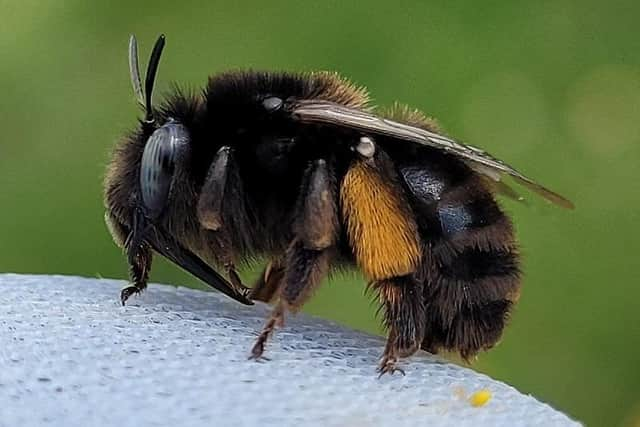One of the rarest species of bee in the UK found at Seaford Head Nature Reserve
and live on Freeview channel 276
It is now only found at two other locations in Britain, and the nature reserve. It nests in the cliffs at Seaford Head, making its burrows in the sandy soils that sit on top of the chalk here. Because of this, it is very vulnerable to erosion by the sea.
It is difficult to know how it will fare as our climate changes, but conservation work by the Sussex Wildlife Trust does at least ensure that the nature reserve at Seaford Head provides good quality habitat and a good supply of pollen and nectar.
Advertisement
Hide AdAdvertisement
Hide AdThe species had been thought to be extinct in Sussex until the discovery of this colony in 1967, and it is still seen in reasonable numbers every year.


According to James Power, author of The Bees of Sussex: “The Potter Flower Bee is a very striking bee and, despite lots of pressures, maintains a toe-hold in Sussex. Its hold here is not as strong as it once was though, and it is now only found along a short section of cliffs at Seaford Head.
"Away from Sussex, it is known from just two other locations in Britain, small areas of coastline on the Isle of Wight and from Purbeck in Dorset. Previously, it was known from across southern England but is now one of the rarest bees in the country.
"The Potter Flower Bee is generally found flying within 75 m of the cliff edge where the males are often a grey blur as they fly rapidly between patches of Ground-ivy. The very different looking females – they are covered in black hairs – also move quickly, gathering pollen and nectar that they carry back to their nests to build or provision their brood cells with.
Advertisement
Hide AdAdvertisement
Hide Ad"Each cell is lined with what is believed to be a mix of nectar and soil that, once dry, resembles egg shell. Within this, the developing bee floats on top of a liquid supply of food made up of pollen and nectar, slowly sinking as it puts on weight.”